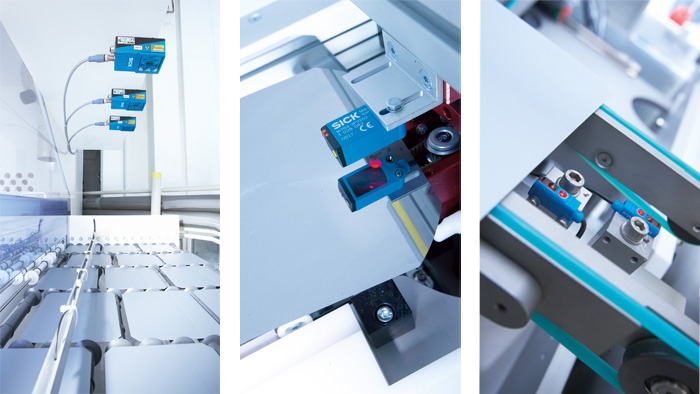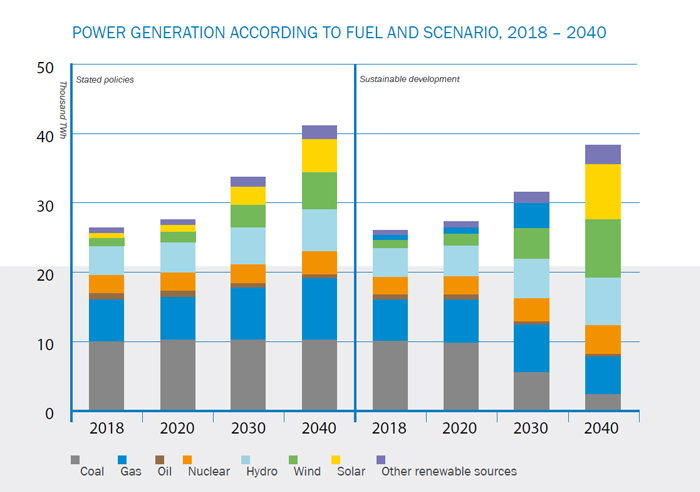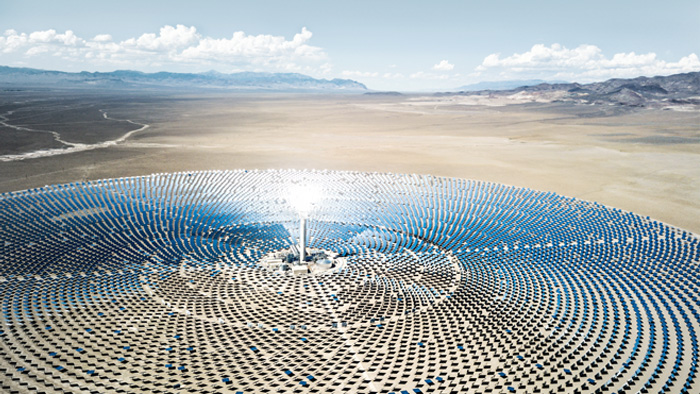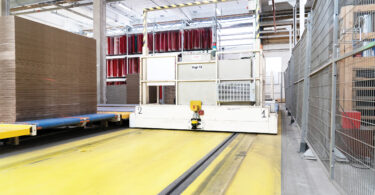How sensors provide solar power plants better access to measurement data
Depending on a system’s capacity and location, solar power plants can supply entire regions with environmentally-friendly energy all day long. Operating entities strive to work with a high degree of efficiency, reliable availability, and profitability. Sensors are necessary to fulfill these requirements and are useful in multiple points of the processes that take place in the solar power plants.
Solar power plants should produce as much power as possible. Thousands of reflectors are operating all over the world, for example, in a first-class plant, the number of reflectors even reaches into the six-digit range. These expansive power plants are often located near the equator, placing them far away from civilization. Since service work for remote regions can’t be performed in a hurry this requires all components installed in the plant to be able to work free of faults for long periods of time.
SICK sensors are known for their reliability. They provide accurate and stable measurements and have long service lives. A convenient tool is the SICK Remote Service program, which is a promise for readily available expert service support. The customer-specific cloud solutions are designed in accordance with strict safety standards. The combination of intelligent sensors, quick service, and networking of data reduces costs and also increases plant efficiency from the solar cell to the heat exchanger to back-up gas fired power plant.

Solar tracking for higher energy yield
In heliostats, parabolic troughs, and solar modules in a photovoltaic solar park, reflectors and solar cells must be constantly aligned with the sun. The sensors measure the tilt or rotational movement of the reflectors and solar cells in one or two dimensions without making contact so that they can track the sun using the position data.
The sensors also can measure on hot, icy, dusty, or wet days because the electronics are highly resistant to inclement weather conditions. The mirrors can concentrate the sunlight on the solar tower using encoders, which then utilizes the energy accordingly. With concentrated solar thermal energy, thousands of mirror systems bundle solar radiation on an absorber surface. At this focal point, molten salt, or thermal oil heats up and then flows through lines into heat accumulators or directly to the steam power plant.
The Telematic Data Collector (TDC) gateway system collects and saves measurement data from sensors using various interfaces. This data flows non-stop to a server or the customer cloud via mobile communication integrated in the system. The incoming and outgoing data increases transparency and can be utilized to increase productivity in downstream process optimization sections. SICK offers optional customer-specific cloud solutions for this purpose.
Efficiency increase in heat accumulators
Heat exchangers in heat accumulators or heat conversion plants generate steam to drive the turbines to generate power. The measurement quality of the steam flow frequently involves making compromises. Inaccuracies in the flow rate and pressure loss often go unnoticed, even leakage hazards are often not always identified.
This doesn’t need to be the case because the FLOWSIC mass flow measurement has proven itself in challenging and high-quality installations for steam quantity measurement. These ultrasonic sensors do not lose pressure, which results in higher system availability. The FID analyzer from SICK monitors organic carbon in low concentrations to protect against leaks in the N2 blanketing system. The MCS300P process gas analyzer checks whether steam or water escapes into the heat transfer oil.
Monitoring solar power
Since the sun delivers so much energy, solar power plants can produce sufficient power and heat making them a legit alternative to conventional power generators. With SICK, you can have your reserve power generation in attached gas-fired power plants under control. Monitoring of the natural gas flow to or within the gas-fired power plants with ultrasonic gas flow meters is also important for accurate invoicing. Nobody wants to pay too much and products created for emission monitoring solutions are available.

The future of solar energy continues
Power generation using solar cells is becoming increasingly attractive amongst regenerative energies. In 1958, U.S. Americans started the solar revolution by equipping the “Vanguard 1” research satellite with solar modules. This success was the precursor for solar energy on earth. Swiss pilot André Borschberg, in his “Solar Impulse 2“ which was powered by solar energy flew 8,300 kilometers nonstop between Japan and Hawaii. This has been the world record since 2015 and satellites continue to use solar energy today. The development of the solar market remains highly innovative with rapidly growing technology development.
Improved automation in solar cell production
SICK sensors are also qualified for the production of solar modules – from simple detection tasks to significant sensor systems in a complex production process. Cameras and software are specially designed for very low-reflectance solar cells and modules. Intelligent track and trace solutions have been proven in quality control. In production, sensors protect humans from dangers in the workplace.
For the last few years, there has been a trend towards more flexible modules. In production, flexible materials are being used as a replacement for rigid and very breakable glass. The flexible modules are much thinner than conventional solar modules. However, their production considerably reduces energy input, which in turn significantly reduces production costs. Without sensor technology, the fragile modules can quickly be damaged beyond repair in automated production processes.
Want to learn more about this technology?





